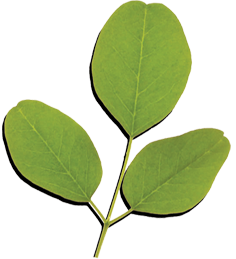MORINGA STENOPETALA
Originally appeared in: Amaranth to Zai Holes, Chapter 4.
Moringa oleifera, native to India, is the number one seed in our seedbank, in terms of number of requests and positive reports. When we learned that a moringa native to Ethiopia had larger edible leaves, more drought resistance, and larger seeds (important for those using moringa to purify water), we were obviously interested. Dr. Samia Jahn shared some seed with us in the past, but our supply is very erratic; if you request seed (FOR OVERSEAS NETWORK ONLY), be aware that you may have to wait a while to receive the seed. If this is your first interest in moringa, please do initial trials with M. oleifera. If you have had success with M. oleifera, it may be time to try this “new” species.
Michael Madany wrote from Somalia of his comparison trial with seed received from elsewhere a few years ago. “In spite of the initial rapid growth of M. oleifera, in drier years the species has not done well without some watering. The M. stenopetala, by contrast, has the lushest green foliage and continued to grow during the exceptionally long dry season from last August until this April. We began cooking leaves and young shoots in April (taste of the two species very similar). We obviously aren’t eating it fast enough, since two large limbs have fallen under their own weight.”
Freezes damaged our one M. stenopetala, forcing subsequent branching from low on the trunk. Consequently, I have not seen a “normal” mature tree. Dr. Jahn says that in the Sudan M. oleifera develops into a slender tree, M. stenopetala into a round shrub-like tree. Before the first freeze, however, a few important differences became clear. The trunk is considerably thicker at the base, the tree seems more vigorous, the leaves are larger, and if tasted raw the leaves are milder.
The more bushy M. stenopetala can be planted as a wind break. “Seedlings were planted in a windy corner at a spacing of 1 m. As soon as the upper branches of the tree grew broader, they were cut and the trees responded by more profuse growth of their lower branches, thus thickening the hedge. Vegetables cultivated behind it profited from this protection.”
M. stenopetala has been grown as an ornamental in private gardens of Europeans in Kenya, reaching 10-12 meters and their trunk diameter is at least 2-3 times as thick as that of M. oleifera in Sudan. In Ethiopia it is cultivated as high as 1800 meters (5400 feet), where people use ash as the main fertilizer. By the end of a long dry season the trees may have lost their leaves.
We have been disappointed that ECHO’s 8-year-old M. stenopetalatree has not yet flowered. We thought it was due to its having been badly damaged by two freezes. Dr. Jahn cites reports that M. stenopetala trees are not as quick to set flowers as M. oleifera. In Sudan the first flowers appeared after 2 1/2 years, compared to 11 months for M. oleifera. Charlie Forst in Haiti reported that his tree flowered in 15 months, grown from a cutting, which may make the difference. In the central plateau of Haiti, the low-branching, large-leaved M. stenopetala has far superior growth in the dry season. It is in full leaf after months without rain, while M. oleifera suffers after severe drought.
Michael Madany wrote again, this time from Kenya. “Since I am quoted in EDN with regard to our experience with Moringa stenopetala in southern Somalia, I’d like to send a few more comments. The last time I saw the trees we planted in February 1986 was January 1990. They had only flowered once (in 1987 or 1988; only a few flowers) and never set seed. Thus, whenever I wanted to plant more, I was obliged to use cuttings. As far as a source of green vegetable matter in the dry season, the tree surpasses its domestic relative Moringa oleifera in that climate (bimodal rainfall of 400-800 mm; 20-40 deg.C). However, for the purpose of producing water-purifying seeds it seems to be not so successful, at least in the first 5 years. I am mystified as to the reasons for this. The provenance for our trees was over 500 km west at a considerably higher elevation.” Michael mentions that during the civil war in Somalia the project buildings were destroyed and “all the trees in our garden were cut down.”
Jay Ram wrote from the Pacific Neem Mission in Hawaii. “MyMoringa stenopetala tree is now 10 feet tall and growing vigorously. I really share your enthusiasm for this wonderful tree. It is one of the best species we have come across. Fast growing with good form, and high palatability. In fact, I commonly will eat the boiled leaves by themselves, [something I do not do withMoringa oleifera which is common on the island].”
There is another interesting difference. The roots of M. oleifera are used as a condiment similar to horseradish. With M. stenopetala it is the bark that is so used.
Dr. Jahn reports on work in the Sudan which shows that optimum light for germination of all moringa species is half shade. When sown in the hotter weather of mid-April, germination percentages for M. stenopetala and M. oleifera were only 54 and 40 percent, compared to 92 and 94 percent in half shade. During the cool dry season there was little difference. Both moringa species can be started from cuttings. However, trees grown from cuttings are known to have much shorter roots. Where longer roots are an advantage for stabilization or access to water, seedlings are clearly preferable.
moringa powder, moringa urban grow, climate change, moringa leaves powder, moringa medicine, moringa water purification., growing moringa, moringa stenopetala, buy moringa tea, moringa oil, moringa seeds, howto eat moringa, buy moringa products
